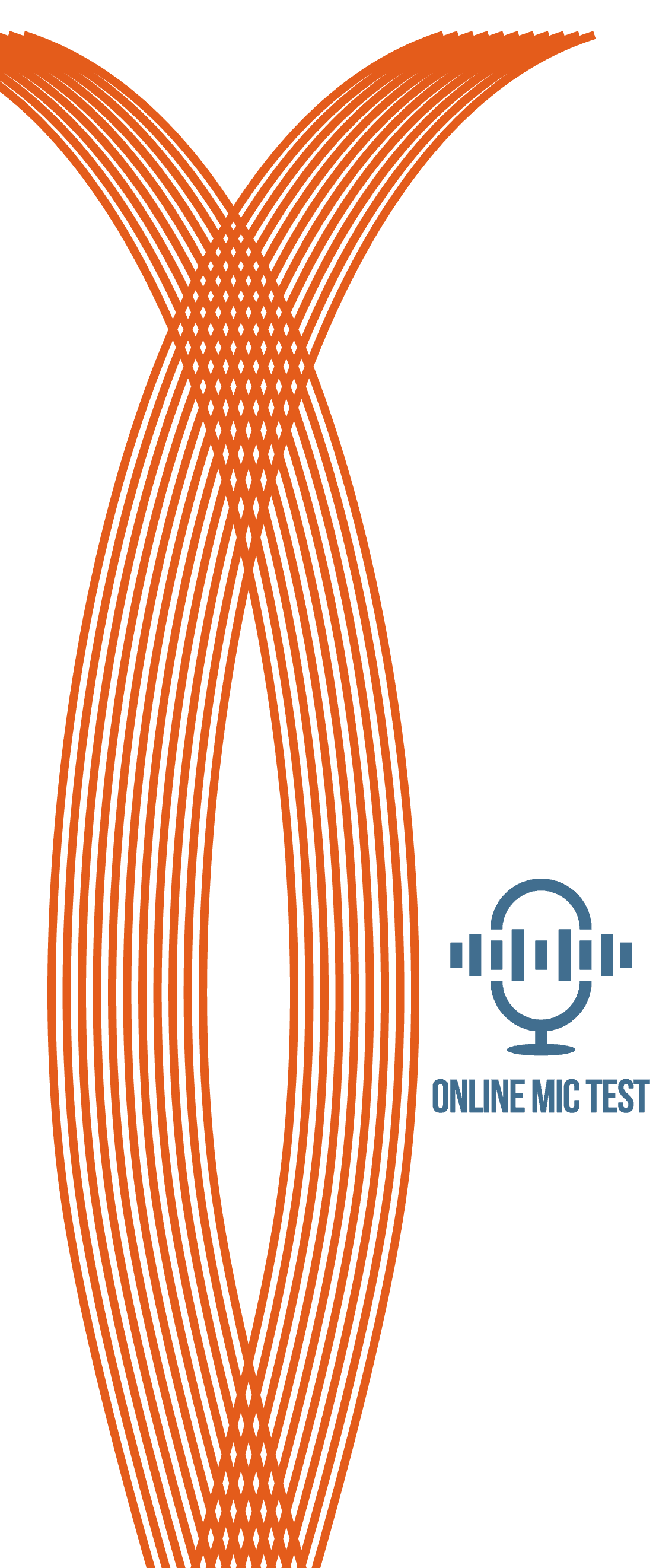Cello Tuner
How to use this tuner:
- 1Click on the ‘Play’ button.
- 2Click ‘allow’ if you see a pop-up asking for permission to use your microphone.
- 3Pluck/bow the your lowest string. This should be tuned to a C. Gently tighten/loosen your string using either its fine tuner or peg, watching until the orange and grey circles in the tuner box line up perfectly - now that string is in tune!
- 4Repeat this process for the 3 remaining strings of your cello. From low to high your strings should be tuned to: C, G, D, A.
- 5Once all your strings are tuned - check them again! Use your fine tuners to make minor adjustments as needed.
- 6Now your cello should be in tune and you are ready to play!
- *There are 2 ways to tune a cello: If your cello is slightly out of tune, use your fine tuners (the small knobs under your strings) to get each string to the correct pitch. If your cello is really out of tune make very gradual adjustments to your pegs (try not to twist them more than a quarter of a turn at a time, otherwise you could snap a string).
Trouble-Shooting Guide:
If the microphone has been allowed but the tuner isn't responding to sounds from your instrument,
see below for possible solutions:
- Check your microphone to make sure it is working properly. You can use the test on our home page and find out more information about microphone troubleshooting here.
- If your microphone is external (meaning not built into your computer) then check to make sure it is securely connected to your input USB port.
- Some microphones have an “ON” / “OFF” mode. Make sure your microphone is set to “ON”.
- Check to make sure that your microphone is not muted. For help with different operating systems and microphone problems, check out our "TECHNICAL GUIDES" section on the left-side menu.
- You can try to use a different browser, like Google Chrome or Mozilla Firefox. Safari might not work with our test.
Learn more about cello tuning:
What is a cello?
- The cello is a stringed musical instrument that was invented in Italy during the 16th century initially as a deeper counterpart to the violin. The first cellos, or "bass violins" as they were called, were much larger than their modern counterparts, as it was harder back then to produce deeper notes without making the instrument itself much bigger.
In the 18th century, Antonio Stradivari (of Stradivarius fame) developed and popularised a smaller cello which became the standard cello size we know today. The cello quickly found popularity amongst musicians and composers, becoming an essential instrument in orchestras around the world.
Throughout the centuries, the cello has undergone many transformations, adapting to the musical landscape of its time, and has starred in some of the most famous classical pieces by the likes of Bach, Shostakovich and Beethoven. But it’s not just restricted to classical music, over the last 100 years, cellists have embraced new techniques, expanding the instrument's expressive possibilities and venturing into new genres such as jazz, rock, pop.
What is the cello's range?
- Along with the oboe and clarinet, the cello is often talked about as being one of the musical instruments most like the human voice. However we would argue its actually even better - it actually has a wider range than any human, and can act as both a bass and soprano at once! The lowest note you can play on the cello is C2 (which clocks in at 65.4 Hz) while the highest is A5 (880 Hz), try hitting those two next time you're singing in the shower!
What is a cello's tuning?
The cello has four strings that are commonly tuned in perfect fifths, progressing from low to high: C2, G2, D3, A3.
This standard cello tuning is what our cello tuner is set to, but if you would like to tune to an alternate cello tuning you can try using our chromatic tuner to tune your cello to any pitch you like.
Fun Fact: The cello is tuned in the exact same intervals as the viola, however the viola is tuned an octave higher - so if you're a cellist looking to try another instrument, viola would be a super easy place to start.
How do I tune my cello with its pegs?
If your cello is only slightly out of tune, we would advise you to use your fine tuners as it is much easier to tune precisely with these. If your cello is really out of tune, use your pegs.
When tuning your cello with its pegs, it is best practice to loosen your strings a few semitones before you tighten them, so for your lowest C2 string, first lower this string down to an A2 or B2. Do this slowly, only turn the pegs gradually, at most a quarter of a turn at a time, to avoid snapping any strings.
Once the string is loosened, slowly tighten it back up to roughly the right pitch (your string will need to be readjusted once you tune your other strings so you don’t need to be too specific on this first go round.) When tightening your peg you will also want to press inwards, while supporting from the other side, to avoid any strings slipping.
Repeat the same process for the 3 remaining strings of your cello, lowering them a few semitones first, then tightening them up to roughly the desired pitch.
Now start again from your C2 string, make some smaller adjustments to each string with your tuning pegs.
Finally when all your strings are near their target notes, use your fine tuners to get the strings to their exact pitches.
Why won’t my cello stay in tune?
Cellos, like all stringed instruments can easily go out of tune due to a number of factors. Some of the most common are:
- Time: This might sound a bit obvious, but if you don’t play your cello for a while, it's very likely that the next time you pick it up it won't be in tune. Over time strings will slacken, which will make your instrument sound flat and a bit "off". So if you’re picking up your cello for the first time in a while, its a good idea to spend some time making sure its back in tune in order get the best sound out of your instrument.
- New Strings: If you’ve recently restrung your cello, you will want to give the strings time to settle in to their new home. Often new strings can slip out of their tuning and it will normally take a couple of days for them to settle in to position and stay consistently in tune. If you want to speed up the process, it’s recommended that you keep playing and regularly tuning your cello during this time.
- Weather and humidity changes: The body of a cello is made from wood, which expands and contracts depending on the temperature around it, this in turn affects the tension of the cello’s strings, and causes them to change their tuning. The optimal temperature for cello storage is 70°F / 21°Cwith a humidity range of 35%-50%.
- Slipping pegs: If your cello’s pegs slip this will cause your strings change their tension and therefore their tuning will change too. One of the main causes of pegs slipping is changes in humidity and temperature, especially if its very low humidity and very dry.
- Improperly adjusted fine tuners: It’s also worth checking your fine tuners to check they are correctly adjusted as this will also affect your cello's tuning. If they are not working as normal, ask a luthier to have a look.
- Incorrectly positioned bridge: If you can see that your cello's bridge is leaning towards the fingerboard try and straighten it as soon as possible. This can either be done by a luthier, or if you feel confident doing this yourself, this video on how to fix a cello's bridge might be a useful guide.
- Checking and addressing these factors can all help improve the tuning consistency of your cello. It's normal to have to tune your cello regularly (ideally each time you play it) however, if you keep coming up against tuning issues, we would recommend contacting a professional luthier to help you and check there are no underlying problems with your instrument.
How do I tune my cello by ear?
Tuning your cello by ear is a great skill to master. Not only is it a good test of your pitch, it’s also useful if you do lots of live performances; if you are in a band, orchestra or jam session and you need to tune a string on the spot, remember, your ears can be your greatest tool!
Cellos, violins and violas are some of the hardest instruments to tune by ear as they are not fretted, so be patient with yourself when learning how to tune by ear. It takes a while to get the knack, but the process is really satisfying and will improve your musical and tonal understanding too.
Follow these steps to tune your cello by ear:
- Hold your cello as you would while playing.
- Use your right hand to pluck or bow your cello's strings, and your left hand to adjust your tuning pegs or fine tuners.
- Start by tuning the lowest string to C (C2 to be technical) . To hear a reference for how a C2 note should sound you can use our handy Online Tone Generator. You could also use a metronome, a tuning fork, or another instrument such as a piano or an (in tune!) cello to play this note.
- Play the string and listen to the reference note. Think: does my string sound higher (sharper) or lower (flatter) than the reference note?
- If you are finding it hard to work out if the string needs to go higher or lower, simply fret a higher note on it and see if that sounds more in harmony with the guide note.
- Keep adjusting your string until both notes resonate together and your string is perfectly in tune. This may take you quite a few goes to master, just take it slowly.
- Once you have got your C string tuned, fret and play a G (G2) on it, this will be your reference note for your string above. Alternatively, you can also use our tone generator to play a perfect G note for you as a reference. Repeat the process of adjusting your string with its corresponding peg/fine tuner until these notes match too.
- Repeat the above two steps for your other two strings, using the string below to fret the reference. Tune them to D (D3) and A (A3).
Need more help tuning your cello by ear? Check out this video which will guide you through the process.
Do you have tuners for other instruments too?
Yes, see all of them here.

